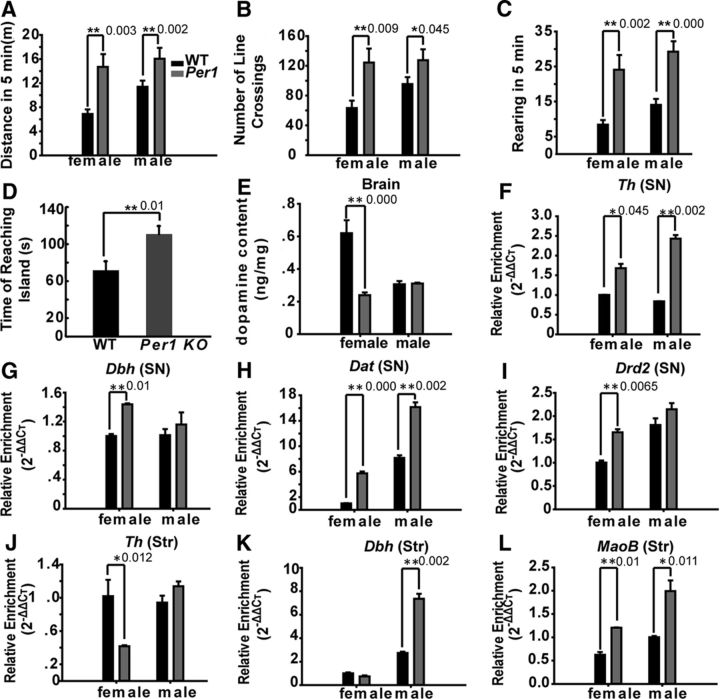Figure 8.
Per1 knock-out mice display ADHD-like symptoms, lower levels of DA, and abnormal expression of DA metabolism and signaling transduction pathway genes. A, Distances that wild-type mice and Per1 knock-out mice (n = 12 each) traveled in 5 min. B, Lines crossed in an open-field test during 5 min. C, The average rearing frequency during 5 min tests. Wild-type mice, n = 12; Per1 knock-out mice. n = 12. Three sets of tests for each animal. D, The learning and memory abilities of wild-type mice and Per1 knock-out mice. n = 12. Data were calculated for three independent experiments. E, The DA level decreased in the brain of Per1 knock-out female mice compared with wild-type mice. Experiments were performed in triplicate, with three biological samples for each experiment. Data were analyzed using Student's t test. All error bars are ±SEM. F–I, Th (F), Dbh (G), Dat (H), and Drd2 (I) are significantly upregulated in the SN of Per1 knock-out mice midbrain. J, The Th expression level is downregulated in the corpus striatum (Str) region of Per1 knock-out mice. K, L, Dbh (K) and MaoB (L) are upregulated in the striatum region of Per1 knock-out mice. Numbers on the right side of the star indicate p values.

